- Stone Center
- Blog
Natural Stone Interior Design: Materials, Uses, and Inspiration
14/11/2025
11/5/2025
Natural Stone Interior Design: Materials, Uses, and Inspiration
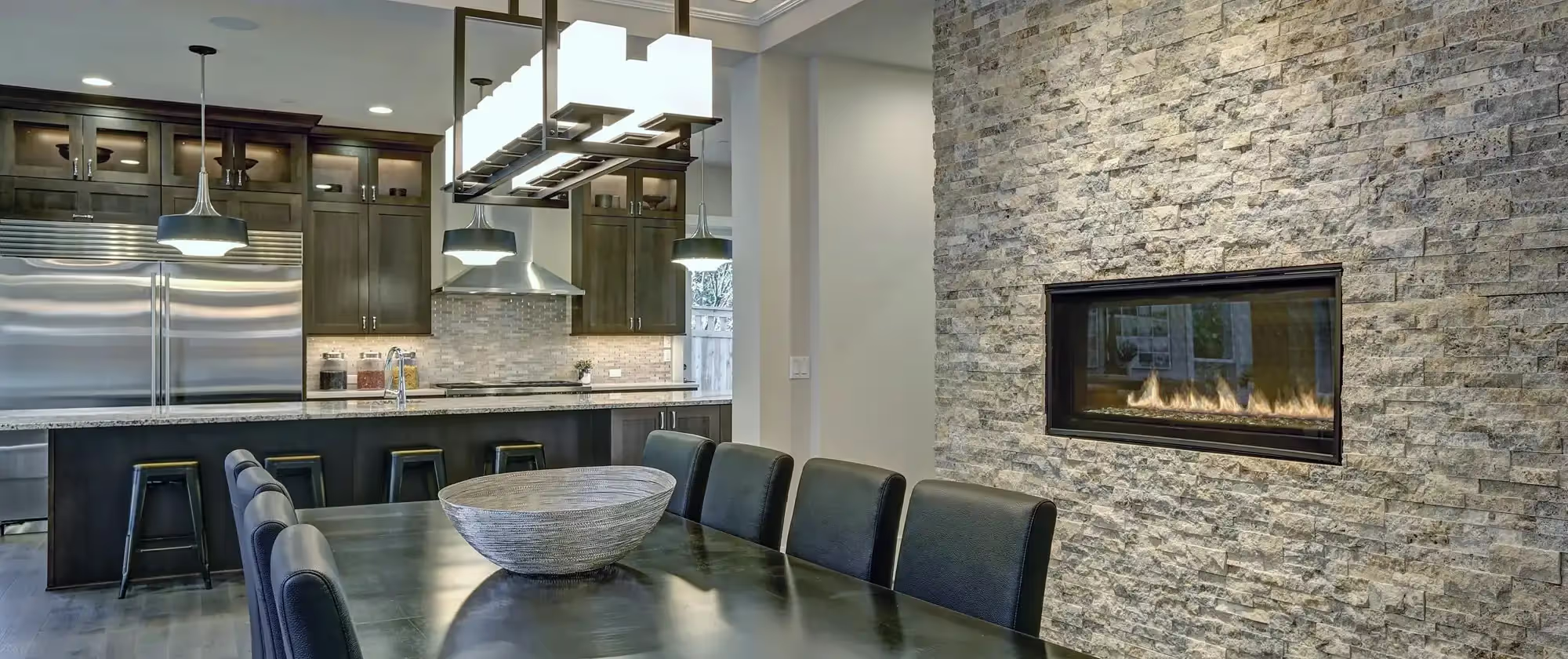
Natural stone has shaped human architecture for thousands of years, from ancient monuments to contemporary residences. Today, this material brings geological history into your home, offering textures and patterns that no manufactured product can duplicate. It’s no wonder that this is such a popular home addition.
Whether you're designing a contemporary retreat or updating a single room, natural building stone offers more than beauty. It creates warm, grounded environments and tells a story in every surface. With options like limestone, travertine, and granite, it's a versatile choice that balances elegance with practicality. The Stone Center team has outlined what you need to know to help educate you and inspire you for your upcoming project.
Why Natural Stone Elevates Interior Spaces
Natural stone delivers benefits that extend far beyond surface-level appearance. When you choose stone for interior applications, you invest in a material that will serve your home for generations. It offers:
- Durability: Stone resists scratches, heat, and wear. It maintains its look for decades, unlike painted walls that fade or chip.
- Temperature regulation: Stone stays cool in summer and holds warmth in winter, easing pressure on HVAC systems.
- Sound absorption: Its density reduces noise, creating quieter rooms and improving acoustics in open-plan layouts.
- Timeless aesthetics: Unlike trendy finishes, stone complements evolving decor, making it future-proof.
- Low maintenance: Sealed stone is easy to clean and doesn’t need refinishing or frequent repairs.
- Increased home value: Homes with natural stone features command higher prices and sell faster than comparable properties with manufactured surfaces.
Natural stone’s practical advantages, combined with its inherent beauty, explain why architects and designers return to this material across all design styles and budget levels.
Natural Stone Types for Interior Applications
The options are expansive when it comes to selecting the right stone for your project. You’ll need to understand each material's characteristics, appearance, and practical properties. Different stones suit different applications based on durability, porosity, and aesthetic qualities.
We recommend matching the stone’s properties to the demands of the application. For example, high-traffic areas benefit from harder stones like granite or quartzite. Decorative features can utilize softer, more dramatic materials, like onyx or marble. Consider how each stone's natural characteristics will interact with your space's lighting, color scheme, and function.
The Statement Accent Stone Wall: A Focal Point of Natural Texture
A single accent stone wall can transform a room’s entire feel. Natural stone’s texture catches light throughout the day, adding depth and visual movement that flat surfaces can’t offer. In bright spaces, darker stones like slate add warmth and contrast; in low-light rooms, lighter limestone or travertine helps brighten the space.
Texture sets the tone. Split-face stone adds drama with strong shadows, while honed finishes offer soft sophistication. Polished stone brings formality, so it’s ideal to use in dining rooms or entryways. Choose rough textures for relaxed areas, and smoother finishes for more refined spaces.
Designer’s rule tip: Use the 60-30-10 rule for balance — let the stone cover 30% of your visual field, with 60% as a neutral base and 10% for accent colors or textures. This keeps your design elegant, not overpowering.
Beyond Walls: Where to Use Natural Stone Throughout Your Home
As you can imagine, natural stone adapts to nearly every interior application, from structural elements to decorative accents. When you understand where and how to incorporate different stones, you can maximize both aesthetic impact and practical performance.
Fireplace Surrounds
Stone and fire share ancient connections that are still relevant in contemporary homes. A natural stone fireplace surround serves as the room's focal point while honoring the hearth's traditional role as a gathering place. Limestone and sandstone bring warmth through their earth tones and subtle textures, while slate offers darker drama that contrasts with flames. Granite withstands heat indefinitely without damage.
Design approaches:
- Floor-to-ceiling stone creates maximum impact, especially in rooms with high ceilings.
- Mantel surrounds focus attention at eye level while allowing wall space above for artwork.
- Hearth extensions in matching stone define the fireplace footprint and provide practical landing space for fireplace tools.
- Stone reacts uniquely to firelight and ambient lighting. Rough textures create dramatic shadows, while polished finishes reflect more light for a brighter, refined look.
Need some inspiration? Explore our completed fireplace projects to see how different stones transform living spaces. Our project gallery shows the range of styles you can achieve with natural stone, from rustic mountain lodges to sleek urban apartments.
#gallery_start


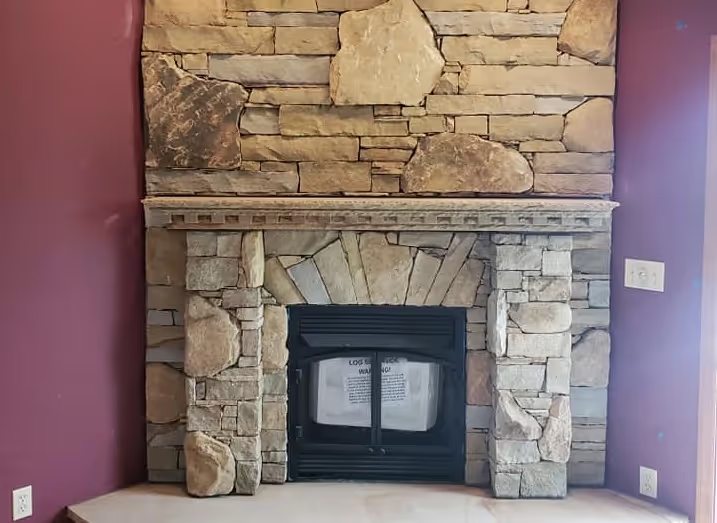


#gallery_end
Kitchen Spaces
Kitchens demand materials that withstand heat, moisture, and constant use. The ideal stones would be granite and quartzite countertops, as they resist scratches, heat damage, and staining better than most alternatives. Limestone cladding is another kitchen option, as it creates dramatic backsplashes that protect walls while establishing visual continuity. You can even consider extending countertop material up the wall behind cooking surfaces for seamless design integration.
Kitchen islands benefit from waterfall edges using bookmatched stone; this includes two slabs from the same block, creating mirror-image veining that flows from horizontal to vertical surfaces. This technique works particularly well with granite, marble, or quartzite. The stone's weight and durability make it ideal for surfaces that double as informal dining areas or homework stations.

Bathroom Retreats
Natural stone adds elegance and function to bathroom design. Full-height limestone or marble in showers creates a spa-like feel with minimal grout lines. Pair polished walls with honed or textured floors for safety. Around vanities, quartzite and granite resist moisture and daily wear, so they’re ideal for high-use areas.
For bathroom flooring, grip matters. Slate offers natural traction, while honed or tumbled limestone and travertine balance safety with style. Avoid polished finishes on floors, as these varieties are better suited for walls or vanities. With the right stone and finish, you can keep your bathrooms beautiful, safe, and easy to maintain.
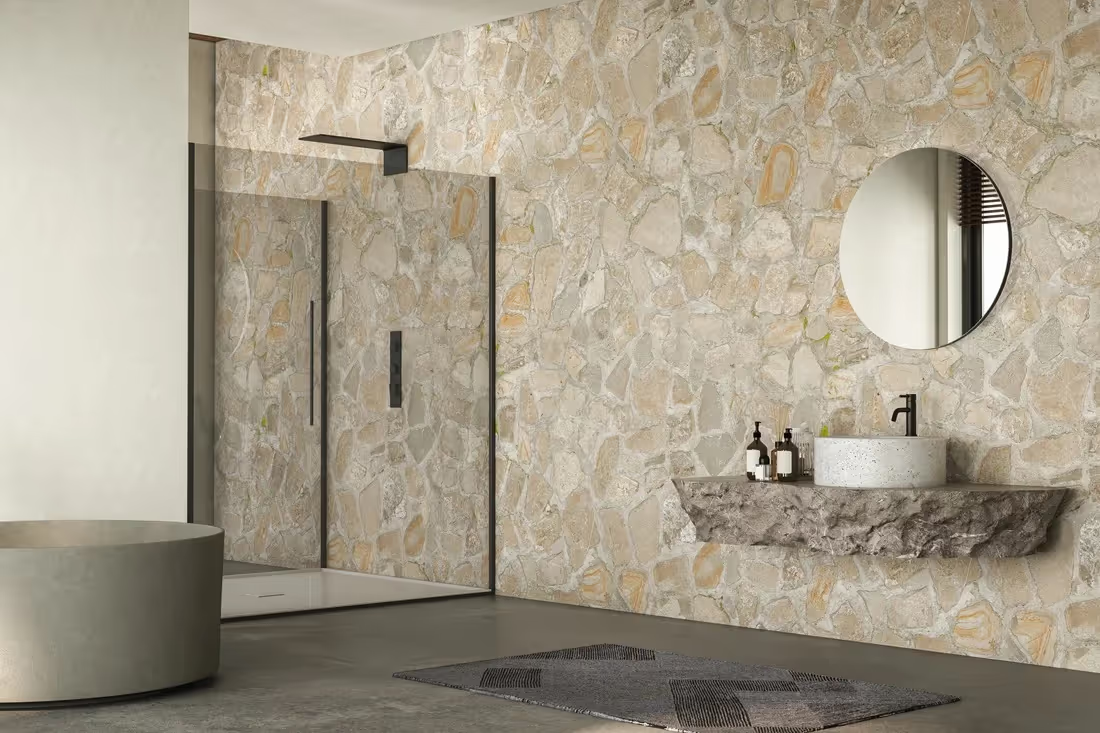
Living Room Features
In the living room, natural stone sets the tone with warmth and texture that paint or wallpaper can’t match. For example, an accent wall behind seating adds depth without overpowering the space, especially when using stones like limestone or sandstone, which offer subtle variation that complements furniture. For a modern touch, floating shelves embedded directly into the stone create sleek, functional displays that blend structure with style.
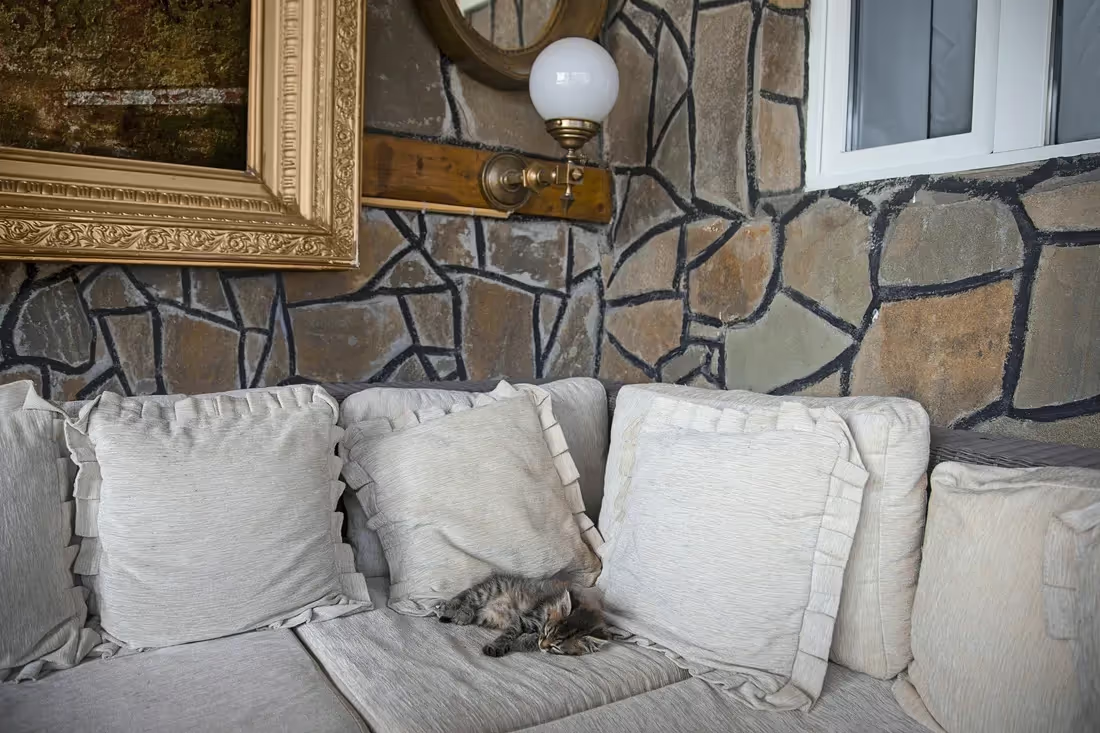
Entryways and Foyers
First impressions matter, and stone in entryways establishes your home's quality and character immediately. A stone accent wall visible from the front door creates impact without needing to use a ton of material. Consider continuing the same stone from floor to wall for dramatic effect; this technique works especially well in contemporary homes with high ceilings.
Pro tip: We recommend using lighter-toned stones like travertine or limestone in entryways to reflect natural light and make smaller foyers feel more open and welcoming.
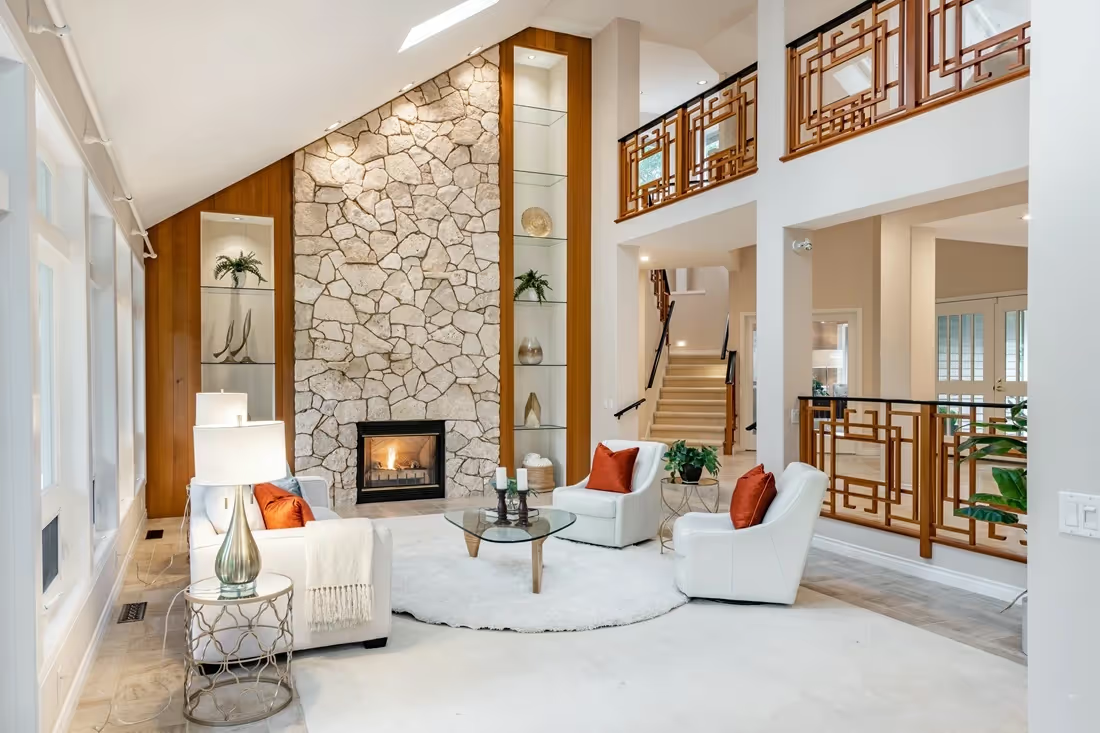
Flooring Applications
Natural stone flooring grounds interior spaces literally and figuratively. The material's weight and density create a solid footing that feels permanent and substantial. Different stones are ideal for different applications based on hardness, slip resistance, and aesthetic qualities.
Here’s how to choose the best option for each use case:
- High-traffic areas: Granite, slate, and quartzite handle heavy use with ease. They resist scratches and keep their finish for years, even in busy homes.
- Moderate-traffic zones: Limestone and travertine suit living areas and bedrooms. Softer underfoot, they offer warmth and natural variation.
- Heating compatibility: Stone retains and radiates heat well, making it perfect to use in tandem with radiant floor systems.

Understanding Stone Veneer: Achieving Natural Beauty with Practical Benefits
Stone veneer brings natural stone aesthetics to projects where full-thickness installation isn’t practical. This approach uses genuine stone cut thin, typically 3/4 to 1-1/4 inches, providing an authentic appearance with reduced weight and cost.
Here’s where veneer excels:
- Upper floor accent walls where weight limits exist.
- Renovation projects over existing surfaces.
- Budget-conscious installations seeking an authentic stone appearance.
- Curved or unusual wall configurations requiring flexible materials.
- Interior applications where full stone depth serves no structural purpose.
Although the installation requirements differ from full stone, they still demand professional expertise. Proper substrate preparation, moisture barriers, and mortar application ensure long-term performance. Pay special attention to corner details to maintain the illusion of solid stone construction.
Natural stone veneer, cut from real blocks, maintains authentic color variation and texture. This is different from manufactured stone veneer, which uses concrete molded to resemble stone. If you value authenticity, specify natural stone veneer explicitly to avoid confusion.
Practical Considerations for Successful Stone Integration
A little bit of thoughtful planning goes a long way in ensuring that natural stone enhances your space not only visually, but functionally and financially for years to come.
#spoilers_start
Understanding Maintenance Requirements
Different stones need different care. Granite and slate require sealing only every few years, while limestone, marble, and travertine benefit from yearly sealing, especially in wet areas. To test the seal, drop water on the surface; if it beads, sealing is still effective.
Daily care is simple: sweep or vacuum to remove grit, and wipe spills quickly, especially acidic ones like citrus or wine. Always use pH-neutral cleaners made for natural stone, and avoid vinegar or harsh chemicals that can cause damage.
Lighting Design for Stone Features
Lighting plays a major role in the look and feel of stone surfaces. Natural daylight brings out the depth and veining in materials like marble and slate, shifting throughout the day as sunlight moves. For the best effect, place stone accent walls near large windows to catch sidelight that enhances texture.
With artificial lighting, aim for soft, angled illumination. Grazing light from above or below creates shadow and depth, especially on textured surfaces. Adjustable LED strips or track lighting can be effective in highlighting specific features and setting the mood. If possible, avoid strong overhead lights on smooth stone, as they can cause glare and flatten the visual effect.
Material Pairing Strategies
While natural stone is stunning on its own, it needs to be paired with the right materials to enhance its texture, warmth, and visual depth. The key is balance, contrasting stone’s organic surface with smooth, sleek, or warm elements creates spaces that feel layered and intentional. Here are some tried-and-true combinations that our Stone Center team has seen work beautifully in stone interior design:
- Stone + wood: Slate with walnut feels rich; limestone with oak brings softness and warmth.
- Stone + glass: Large windows or glass tables near stone keep spaces bright and open.
- Stone + metal: Brushed steel or matte black contrasts with the stone’s texture for a modern look.
#spoilers_end
Transform Your Home with Natural Stone Interior Design
Natural stone brings geological history into your daily life, connecting your home to processes that shaped the planet over millions of years. Consider that the marble in your bathroom was formed from ancient seabeds, or that the limestone on your accent wall contains fossils from organisms that lived long before humans walked the earth. This depth of story and authenticity cannot be manufactured or replicated.
For over 70 years, Stone Center has helped Ohio homeowners and designers choose the right natural stone for their projects. We’re passionate about providing excellent, hands-on service and ensuring you feel confident in your investment.
Visit our Columbus or Cincinnati showrooms to explore materials, see how lighting affects texture and tone, and get expert advice. We’ll also connect you with trusted installers to bring your project to life with precision and care. Contact us today to connect with trusted installers and start your project with confidence.
FAQ
.avif)
Jon, the owner of Stone Center, is a knowledgeable expert in natural stone products, specializing in various types of stone for landscaping and architectural projects. Passionate about promoting the beauty and versatility of natural stone, Jon aims to use these blogs to inspire readers with creative ideas to upgrade their homes.
How much does it cost to get a stone restored?
How much you end up spending to restore stone varies on the type of stone, the technique, and the stone’s current condition. Stone in good condition will cost less to restore, whereas stone that has a lot of wear and tear may require a longer restoration.





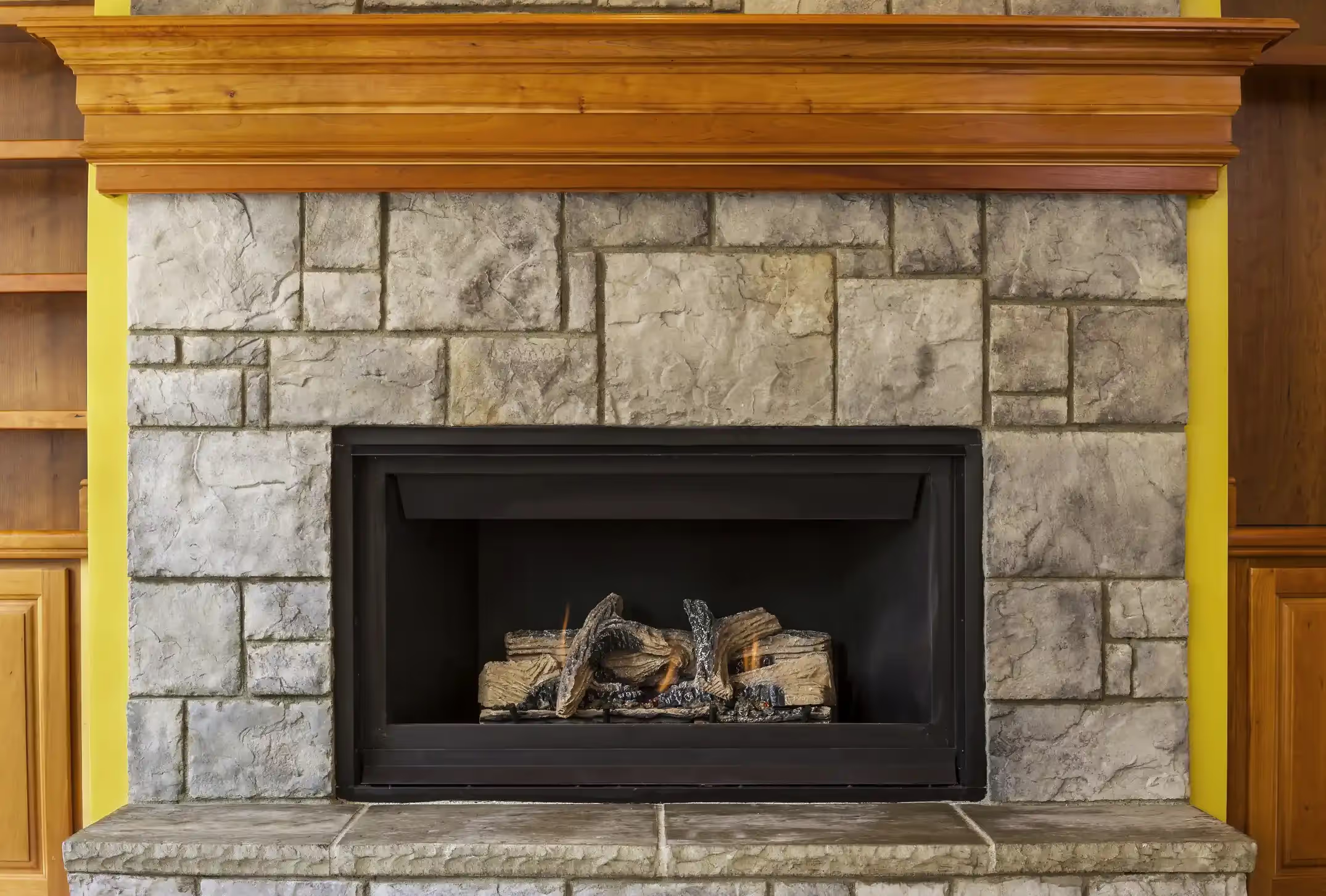
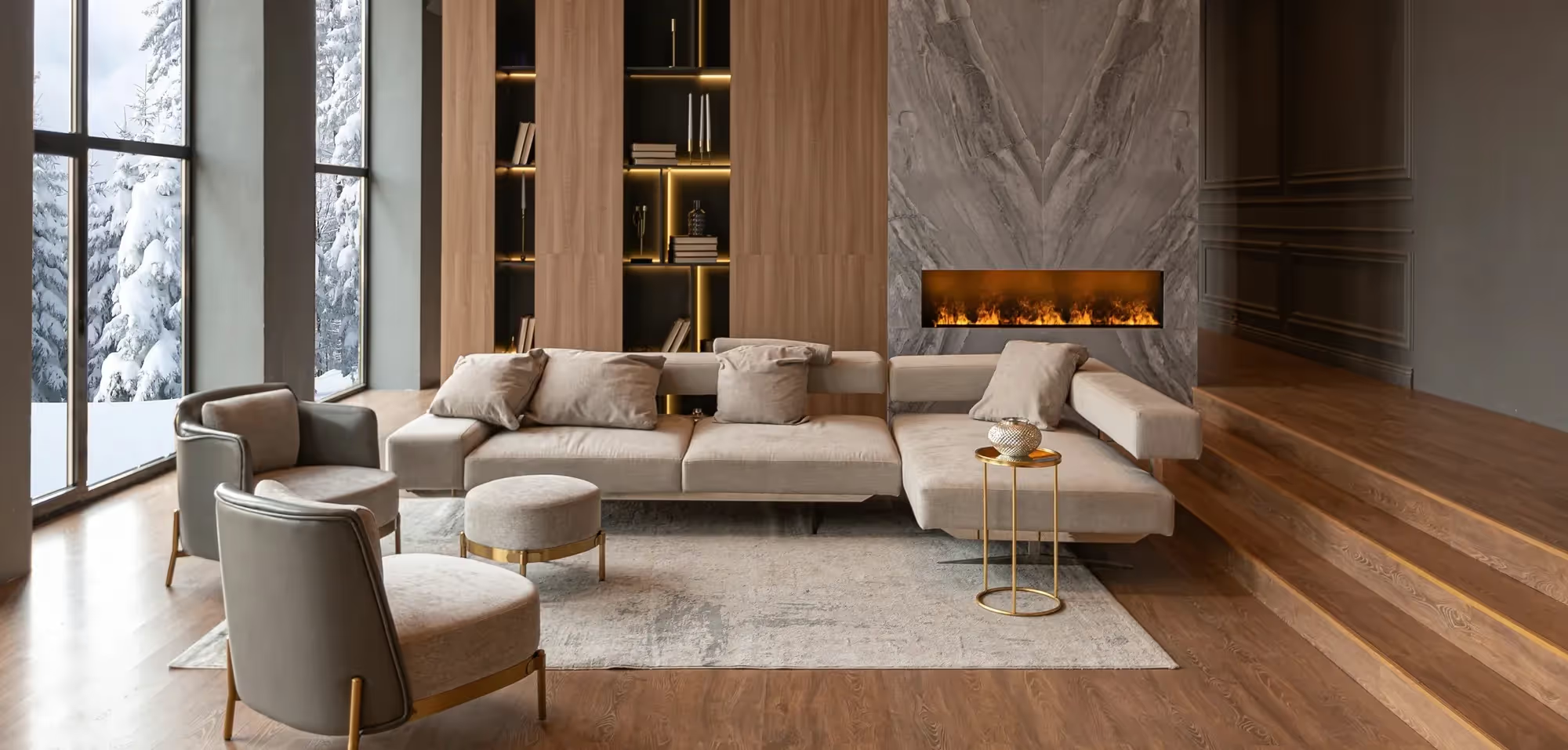
.avif)
.avif)
.avif)

.avif)
